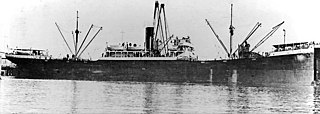
USS Blueback (SS-326), a Balao-class submarine in commission from 1944 to 1948, was the first submarine of the United States Navy to be named for the blueback salmon, also known as the sockeye salmon. She completed three war patrols in the South China Sea and Java Sea during World War II. She sank a 300-displacement ton submarine chaser as well as eight smaller vessels.

USS Bluegill (SS-242/SSK-242) was a Gato-class submarine in commission in the United States Navy from 1943 to 1946, from 1951 to 1952, and from 1953 to 1969. She was named for the bluegill, a sunfish of the Mississippi Valley.

The first USS Patterson (DD-36) was a modified Paulding-class destroyer in the United States Navy during World War I and later in the United States Coast Guard, designated as CG-16. She was named for Daniel Patterson.

USS O-6 (SS-67) was an O-class submarine in commission in the United States Navy from 1918 to 1931 and from 1941 to 1945. She served in both World War I and World War II.

USS Pastores (AF-16) was a Pastores class store ship acquired by the U.S. Navy during World War I and re-acquired during World War II. Pastores served as a stores ship, responsible for delivering supplies to military personnel in combat and non-combat areas. She served in both World War I and II, and was awarded one battle star during World War II.

USS SC-48, sometimes styled as either Submarine Chaser No. 48 or S.C.-48, was an SC-1-class submarine chaser built for the United States Navy during World War I. Like most members of her class, she was not named and known only by her designation.

The SS Empire Miniver was a British steam merchant ship. She was originally an American merchant, launched in 1918 as SS West Cobalt. During a brief stint in the United States Navy in 1919, she was known as USS West Cobalt (ID-3836).

Seisho Maru was a cargo ship for Mitsui Bussan Kaisho in military service that was sunk by an American submarine during World War II. The ship had been built as SS West Caruth, a cargo ship for the United States Shipping Board (USSB) shortly after the end of World War I. Shortly after completion, the ship was inspected by the United States Navy for possible use as USS West Caruth (ID-2850) but was neither taken into the Navy nor ever commissioned under that name. Before being sold to Japanese owners in 1928, she was also known as SS Exmoor and SS Antonio Tripcovich.

USS Texan (ID-1354) was a United States Navy cargo ship and troop transport in commission from 1918 to 1919.
USS West Gambo (ID-3220) was a steel-hulled, single-screw cargo ship that served in the United States Navy from 1918 to 1919. She later saw commercial service as SS West Gambo and SS Empire Hartebeeste, and under the latter name was sunk during World War II.

USS Dreadnaught (ID-1951), later YT-534 and YNG-21, was a United States Navy tug that was in service from 1918 to 1944.
USS West Mead (ID-3548), also spelled Westmead, was a United States Navy cargo ship in commission from 1918 to 1919.

The SC-1 class was a large class of submarine chasers built during World War I for the United States Navy. They were ordered in very large numbers in order to combat attacks by German U-boats, with 442 boats built from 1917 to 1919.

United States Navy operations during World War I began on April 6, 1917, after the formal declaration of war on the German Empire. The American navy focused on countering enemy U-boats in the Atlantic Ocean and the Mediterranean Sea while convoying men and supplies to France and Italy. Because of United States's late entry into the war, her capital ships never engaged the German fleet and few decisive submarine actions occurred.

USS Westpool (ID-3675) – sometimes written as West Pool – was a cargo ship of the United States Navy that served during World War I and its immediate aftermath. As SS Westpool, she was sunk during World War II after being sold to the United Kingdom for use as a merchant ship.

USS Western Chief (ID-3161) was a cargo ship of the United States Navy that served during World War I and its immediate aftermath. As SS Western Chief, she was sunk during World War II after being sold to the United Kingdom for use as a merchant ship.

USS SC-209, prior to July 1920 known as USS Submarine Chaser No. 209 or USS S.C. 209, was an SC-1-class submarine chaser in commission in the United States Navy during 1918. She was the victim of the deadliest friendly fire incident involving the U.S. Navy during World War I.
USS SC-94, prior to July 1920 known as USS Submarine Chaser No. 94 or USS S.C. 94, was an SC-1-class submarine chaser built for the United States Navy during World War I. She operated as part of the Otranto Barrage during the war.
USS SC-151, prior to July 1920 known as USS Submarine Chaser No. 151 or USS S.C. 151, was an SC-1-class submarine chaser built for the United States Navy during World War I. She operated as part of the Otranto Barrage during the war.

USS SC-227, prior to July 1920 known as USS Submarine Chaser No. 227 or USS S.C. 227, was an SC-1-class submarine chaser built for the United States Navy during World War I. She operated as part of the Otranto Barrage during the war.



















